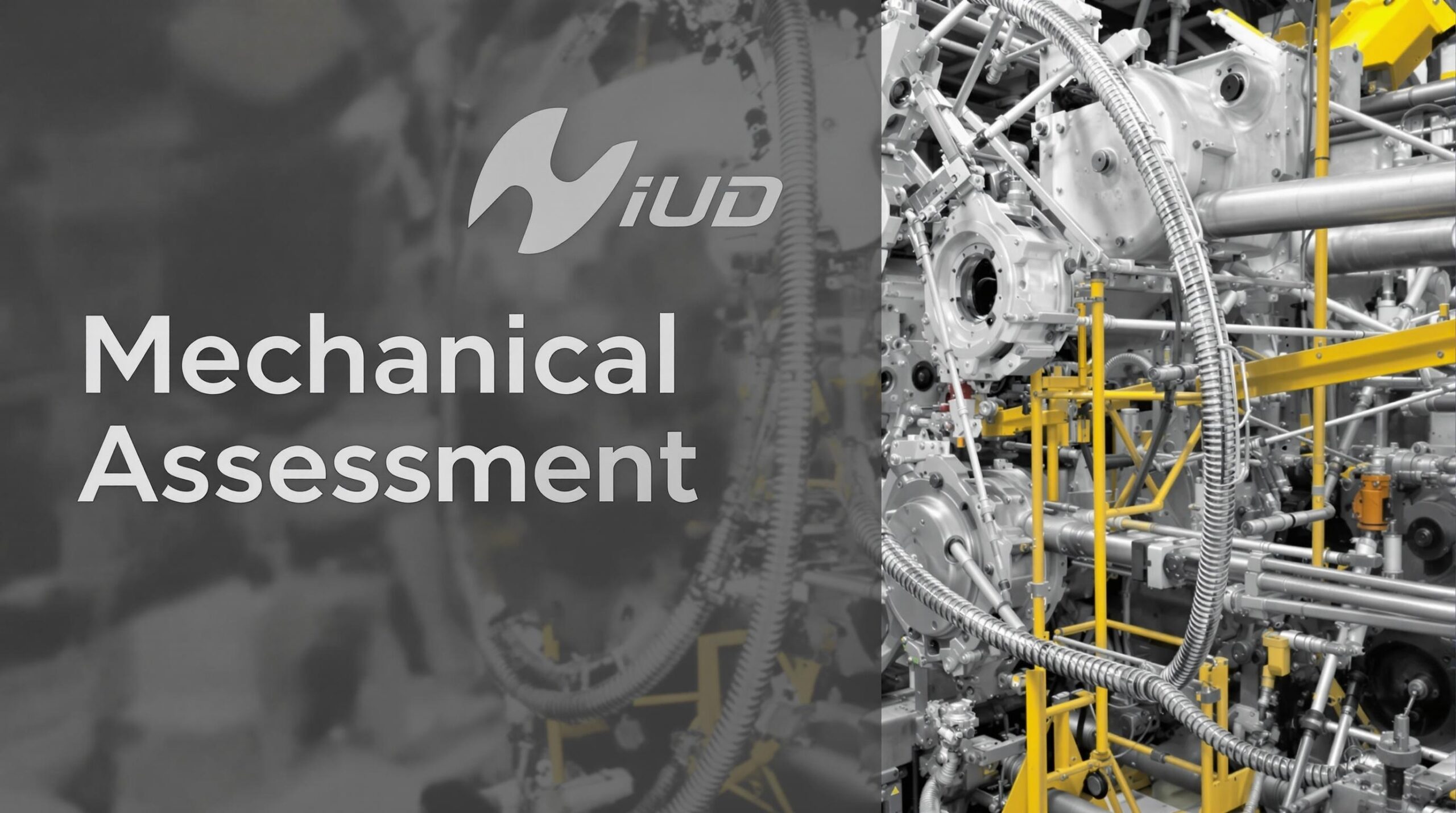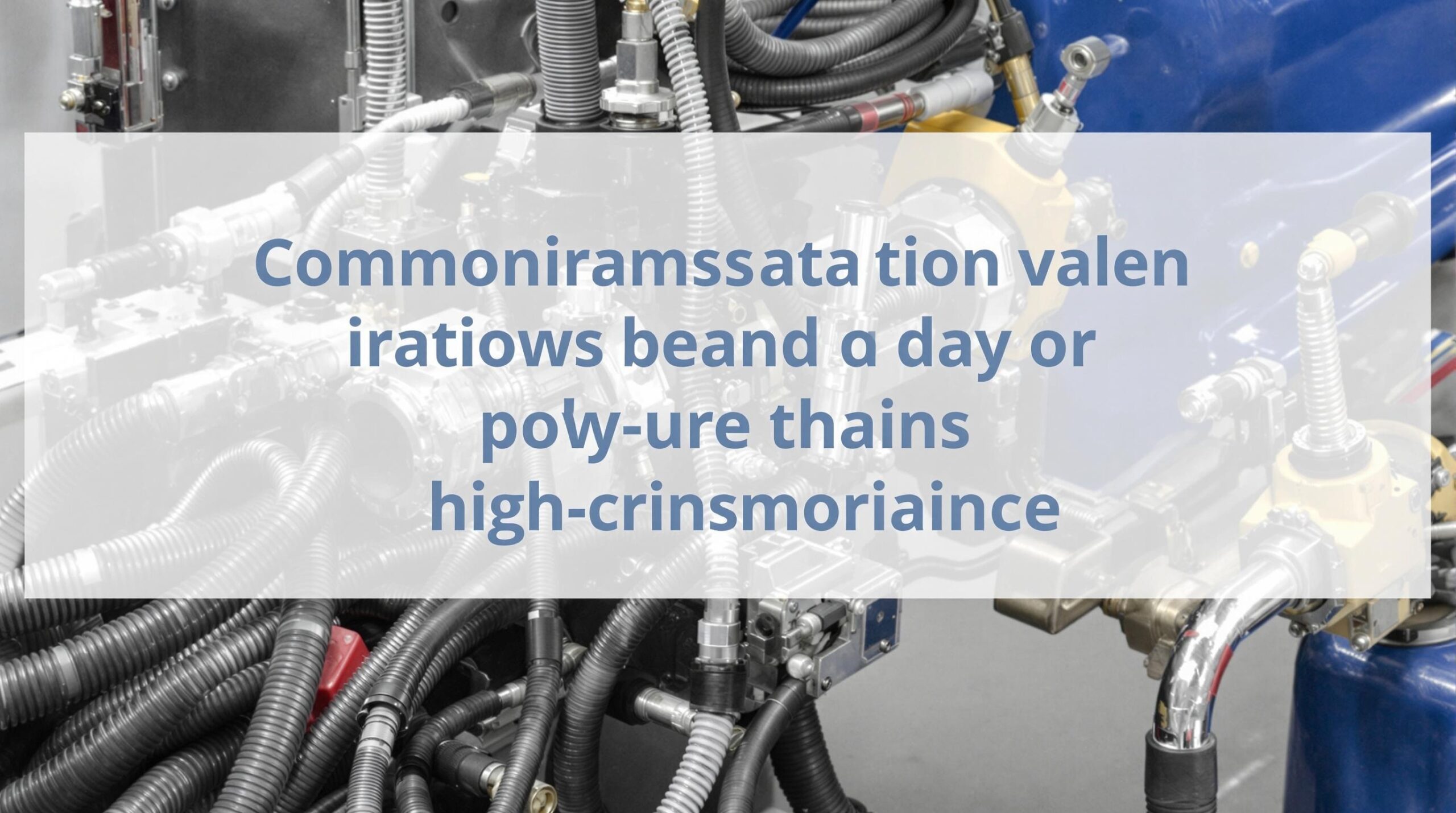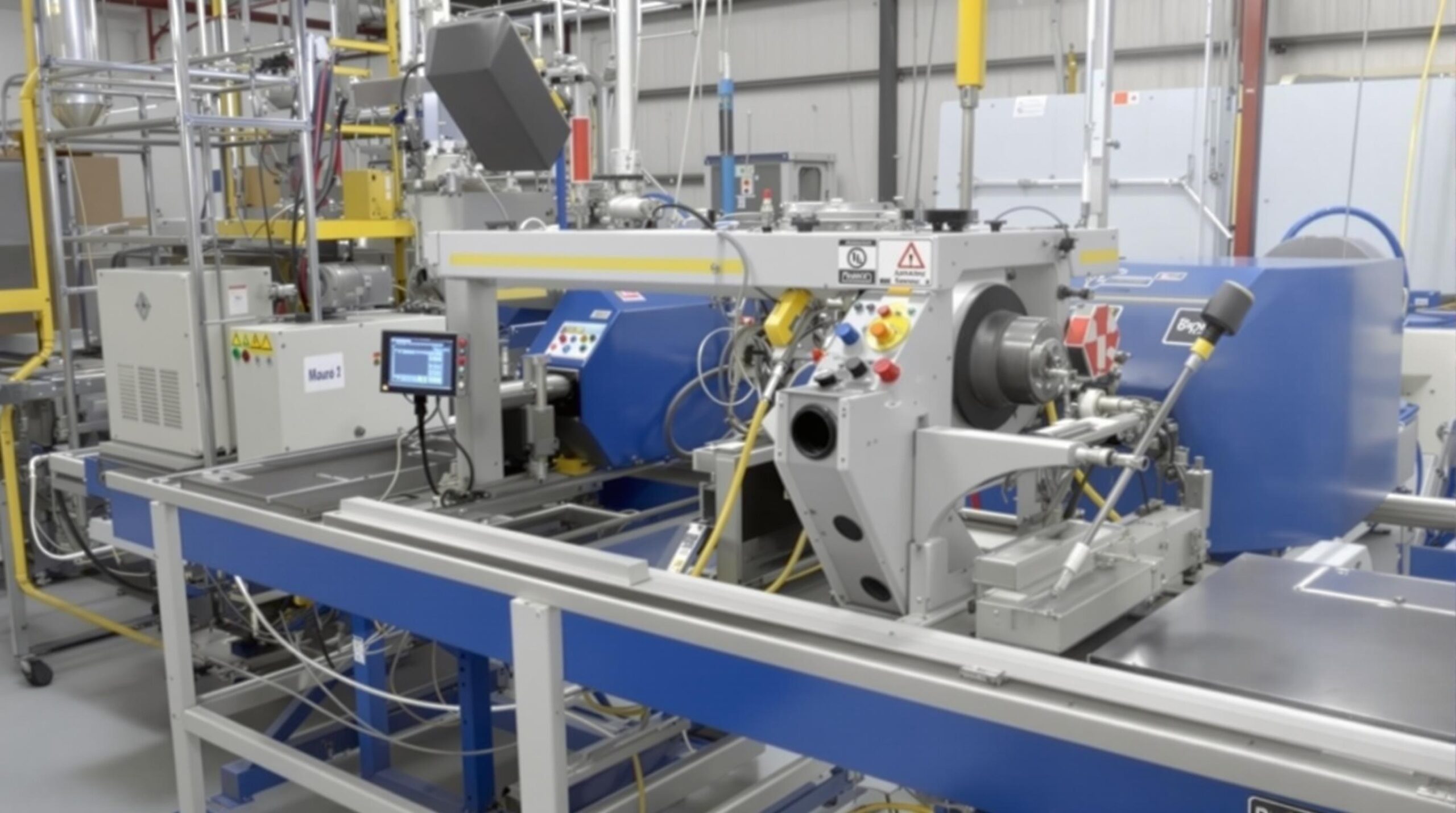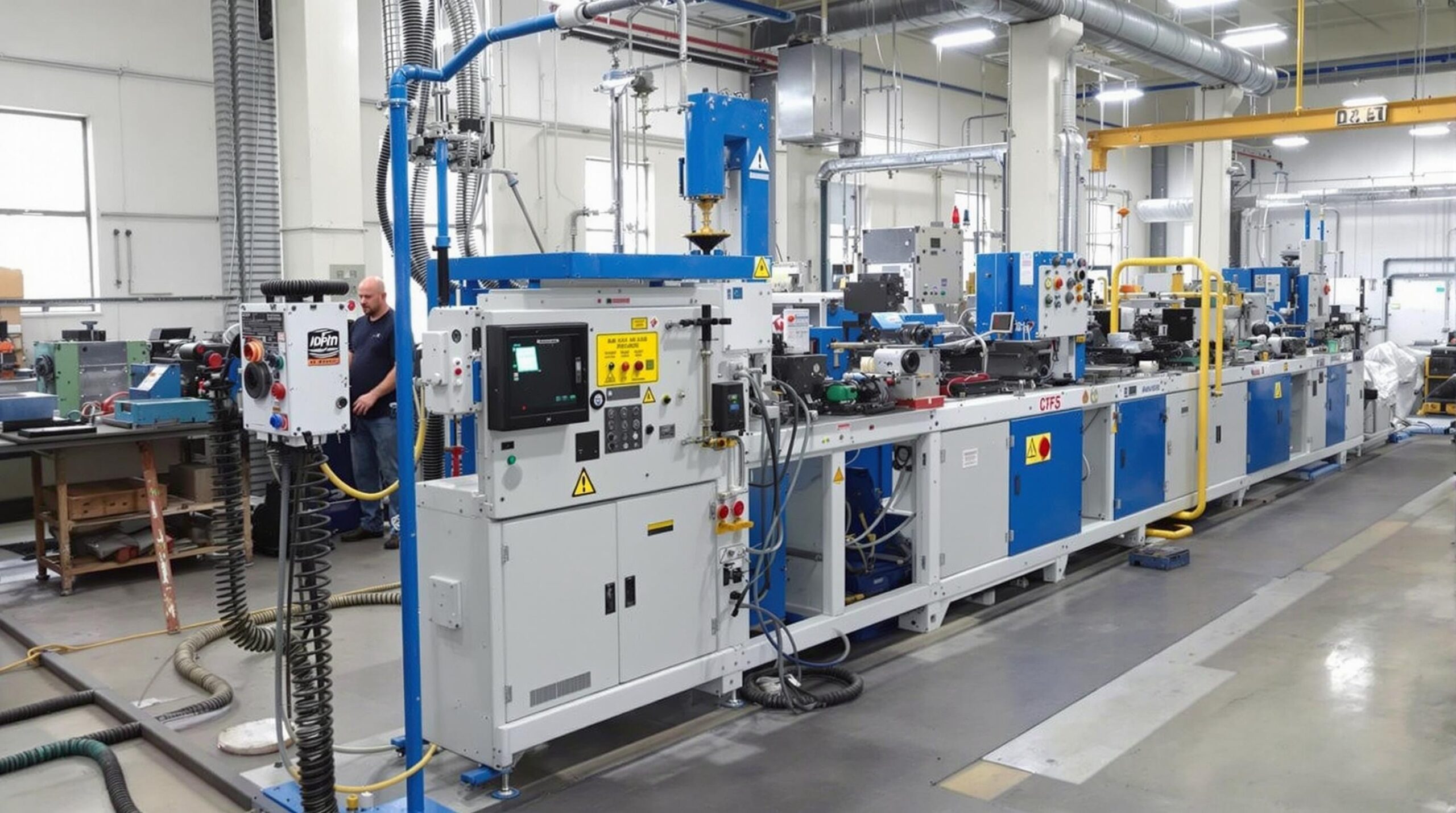Purchasing a used polyurethane high-pressure machine requires careful assessment of mechanical components, operational history, and potential hidden issues that could lead to costly repairs. The machine's condition, maintenance records, and compatibility with your production requirements are critical factors that determine whether you're making a sound investment or acquiring a problematic asset.
النقاط الرئيسية
- Thoroughly inspect the mechanical components and hydraulic systems for wear and damage
- Request complete maintenance records and operational history of the machine
- Verify the machine's compatibility with your specific production requirements
- Check for availability of spare parts and technical support from the manufacturer
- Conduct a test run before finalizing purchase to evaluate actual performance
Understanding Used Polyurethane High-Pressure Machines
Polyurethane high-pressure machines are specialized equipment used for mixing and dispensing polyurethane materials in various industrial applications. These machines operate under significant pressure to properly mix polyol and isocyanate components, creating the final polyurethane product. When considering a used machine, it's essential to understand the basic components and their functions.
The main components include pumps, heaters, hoses, mixers, and control systems. Each part plays a crucial role in the overall operation and efficiency of the machine. The pumps control the material flow rate and ratio, while heaters maintain the optimal temperature for processing. Monitoring systems track and adjust these parameters during operation to ensure consistent product quality.
Used machines can offer توفير كبير في التكاليف compared to new equipment, but they come with inherent risks. The machine's age, operational history, and maintenance record directly affect its current condition and future performance. Understanding these aspects helps in making an informed purchasing decision that aligns with your production needs.
Mechanical Condition Assessment
ال mechanical integrity of a used polyurethane high-pressure machine is perhaps the most important aspect to evaluate. Start by examining the frame and structure for any signs of damage, rust, or poor repairs that might affect stability during operation. Structural issues can lead to misalignment of components and premature wear.
Inspect all moving parts for wear patterns, which can indicate how the machine was used and maintained. Pay particular attention to:
- Pumps and motors for leaks or unusual noises
- Drive mechanisms for wear, backlash, or play
- Bearings and seals that may need replacement
- Mixing head components for cleanliness and wear
- Material feed systems for proper operation
ال hydraulic system is another critical area requiring detailed inspection. Look for signs of oil leakage, which could indicate seal failures or damaged components. Check hydraulic cylinders for smooth operation and proper function. The condition of hydraulic hoses and fittings can reveal much about the overall maintenance practice – cracked or worn hoses suggest neglected maintenance.
Request a pressure test to verify that the machine can safely achieve and maintain the required operating pressures. This test can reveal internal wear in pumps, valves, and other pressure-containing components that might not be visible during a visual inspection.
Control Systems and Electronics
Modern polyurethane high-pressure machines rely heavily on electronic controls to maintain precise mixing ratios, temperatures, and pressures. When examining a used machine, pay special attention to the condition and functionality of these systems. Outdated or malfunctioning controls can significantly impact product quality and may be expensive to repair or update.
Test all control panels and interfaces to ensure they respond correctly to inputs and display accurate information. Check for:
- Responsive touchscreens without dead spots or calibration issues
- Functional buttons and switches without excessive wear
- Clear and accurate displays of critical parameters
- Proper operation of emergency stop systems
- Functional alarms and warning systems
Ask about the control software version and whether updates are available. Older software may lack features or contain bugs that have been fixed in newer versions. If the machine uses proprietary software, confirm that it's included in the sale and that license transfers are possible.
Verify the electrical system's condition by checking for loose connections, frayed wires, or signs of overheating. Electrical issues can cause intermittent problems that are difficult to diagnose and may present safety hazards. Having an electrician or specialized technician inspect these systems can prevent future headaches.
Heating System Evaluation
The heating system in a polyurethane high-pressure machine is fundamental to proper operation, as polyurethane components must be maintained at specific temperatures for optimal mixing and reaction. Inspect all heating elements, temperature sensors, and thermostats for proper function and condition.
Check for uniform heating across all zones by using temperature measurement tools. Uneven heating can lead to inconsistent material viscosity and poor mixing, resulting in product defects. During a test run, monitor how quickly the machine reaches operating temperature and how well it maintains that temperature during continuous operation.
Examine all مواد العزل on heated components, as damaged or missing insulation can lead to energy inefficiency and temperature control problems. Also inspect heat exchangers, if present, for signs of scaling, corrosion, or blockages that could reduce heat transfer efficiency.
The heating system's control accuracy is critical for consistent production. Verify that temperature controllers maintain set points within acceptable tolerances, especially during changes in material flow or ambient conditions. Temperature fluctuations beyond normal operating parameters can indicate failing components or control issues.
Maintenance History and Documentation
A comprehensive maintenance record is invaluable when evaluating a used polyurethane machine. These documents provide insight into how well the machine has been cared for and what components have been replaced or repaired. Ask the seller for:
- Service logs documenting regular maintenance
- Records of repairs and part replacements
- Calibration certificates for critical components
- Original manufacturer's documentation and manuals
- Any equipment modifications or upgrades performed
The absence of maintenance documentation should be considered a warning sign. Without this information, it's difficult to assess the machine's true condition and predict potential issues. If records are incomplete, try to determine why – occasional gaps might be acceptable, but systematic lack of documentation suggests negligent maintenance practices.
Review the operational history to understand how the machine was used. Machines that operated continuously in high-production environments may have more wear than those used intermittently. Also, inquire about the types of materials processed through the machine, as some formulations are more abrasive or corrosive than others.
Don't hesitate to contact the original manufacturer with the machine's serial number to verify its age and original specifications. Manufacturers can often provide information about known issues with specific models or production runs, helping you assess potential risks.
Spare Parts Availability and Support
Before finalizing any purchase, investigate the availability of spare parts for the specific model you're considering. Older machines may have limited part availability, which can lead to extended downtime if repairs are needed. Contact the original manufacturer and third-party suppliers to assess the current supply situation.
Consider the technical support available for the machine. Is the manufacturer still in business? Do they offer support for older models? Are there independent technicians familiar with this equipment in your area? The answers to these questions can significantly impact your long-term ownership experience.
For machines from discontinued lines or manufacturers that have gone out of business, research alternative sources for parts. In some cases, compatible parts may be available from other manufacturers, or specialized machine shops can fabricate custom components. However, these options typically cost more and take longer than original parts.
Factor the potential cost of repairs into your purchase decision. If critical components are expensive or difficult to source, the initially attractive purchase price may be offset by high maintenance costs. Create a contingency budget for likely repairs based on the machine's condition and age.
Performance Testing Before Purchase
Whenever possible, arrange to see the machine in actual operation before completing the purchase. This allows you to assess its performance under real working conditions and identify issues that might not be apparent when the machine is idle. During the test run, pay attention to:
- Start-up procedures and warm-up time requirements
- Noise levels and unusual sounds during operation
- Stability of operating parameters (pressure, temperature, flow)
- Quality of the finished product
- Shutdown procedures and cleaning requirements
Monitor fluid pressures and temperatures throughout the test to ensure they remain stable and within specifications. Fluctuations can indicate pump problems, control issues, or restrictions in the fluid path. Also observe the mixing action at the dispensing head for consistency and proper material combination.
Test the machine with materials similar to those you intend to use in your production. Different formulations can place varying demands on equipment, and a machine that performs well with one material combination might struggle with another. If possible, process a complete batch and evaluate the quality of the finished product.
During the demonstration, ask the operator about any quirks or special procedures required to keep the machine running properly. These insights can be valuable for evaluating the true condition of the equipment and anticipating any operational challenges you might face.
Evaluating Prior Contamination Issues
Polyurethane machines are susceptible to material contamination problems that can be difficult to detect but may significantly impact performance. Cross-contamination between polyol and isocyanate systems can cause serious damage and affect product quality. Look for signs of previous contamination issues, such as:
- Residue buildup in material paths or mixing chamber
- Discoloration of components that contact materials
- Evidence of previously seized pumps or valves
- Patches or repairs to material tanks or lines
- Replacement parts in only one side of the system
Examine the cleaning systems and solvent flushing mechanisms, which are critical for preventing cross-contamination. Test their operation during the demonstration to ensure they function properly. Inadequate cleaning can lead to blockages and premature component failure.
Ask about the types of materials previously processed through the machine. Some polyurethane formulations leave more residue or are more difficult to clean than others. This information can help you anticipate potential contamination issues and cleaning challenges.
Consider requesting a material analysis of samples taken from the machine's component tanks and lines. This can reveal contamination that isn't visually apparent but could affect your production. Professional testing services can provide this analysis for a relatively small fee compared to the cost of the machine.
Transportation and Installation Considerations
The logistics of moving and installing a used polyurethane machine require careful planning. These machines are heavy and often require specialized equipment for transportation and positioning. Before purchasing, measure doorways, elevators, and installation spaces to ensure the machine can be moved into place without disassembly.
Consider the utility requirements of the machine, including:
- Electrical supply (voltage, phase, amperage)
- Compressed air (pressure, volume, quality)
- Water for cooling systems (flow rate, pressure, temperature)
- Ventilation needs for operator safety
- Floor load capacity at the installation location
Factor the installation costs into your budget, including any necessary modifications to your facility. You may need to install new electrical service, compressed air lines, or reinforced flooring to accommodate the machine. These costs can be substantial and should be considered part of the total investment.
Plan for professional assistance during installation. Even if you have in-house maintenance capabilities, having an expert familiar with the specific machine can prevent damage during setup and ensure proper initial configuration. Many sellers offer installation services for an additional fee, which can be a worthwhile investment.
Negotiating Price and Warranty Terms
When negotiating the purchase of a used polyurethane machine, use your inspection findings to justify price adjustments. Document any issues discovered during evaluation and estimate the cost of necessary repairs or replacements. This information provides leverage for negotiating a fair price that reflects the machine's true condition.
Request a conditional warranty from the seller, even for used equipment. While you might not get the same coverage as with new machinery, a 30-90 day warranty covering major components can provide valuable protection. Be specific about what's covered and under what circumstances.
Consider proposing a performance guarantee tied to specific metrics relevant to your production needs. This might include:
- Minimum output capacity for a specified material
- Consistency of mix ratio within acceptable tolerances
- Maximum energy consumption at rated output
- Maximum acceptable material waste percentage
- Reliability requirements (maximum downtime)
Negotiate training and support as part of the purchase agreement. Ask the seller to provide operator training, initial setup assistance, or a certain number of hours of technical support after installation. This knowledge transfer can be as valuable as the equipment itself, especially for complex machines.
Environmental and Safety Compliance
Verify that the used machine meets current اللوائح البيئية in your jurisdiction. Older equipment may not comply with modern emissions standards or may use materials now restricted or regulated. Non-compliant equipment might require costly modifications to meet legal requirements.
Check all safety systems thoroughly, including:
- Emergency stop buttons and circuits
- Safety interlocks and guards
- Pressure relief valves and rupture discs
- Leak detection systems for hazardous materials
- Fire suppression systems if applicable
Missing or modified safety features can create liability issues and workplace hazards. Never remove or bypass safety systems to improve production efficiency. If original safety features have been removed, factor the cost of proper restoration into your purchase decision.
Consider having an independent safety inspection performed by a qualified professional before finalizing the purchase. This provides documentation of the machine's condition at the time of sale and identifies any safety issues that need to be addressed before operation.
Energy Efficiency Considerations
Older polyurethane machines often consume more طاقة than newer models with similar output capacity. Calculate the potential operating cost difference based on your production volume and local energy rates. In some cases, the higher efficiency of a newer machine might justify its higher purchase price through reduced operating costs.
Examine the insulation quality on heated components, as deteriorated insulation increases energy consumption. Check heating elements for scale buildup or damage that might reduce thermal efficiency. Well-maintained heating systems consume significantly less energy than neglected ones.
Review the pump and motor specifications to assess their energy efficiency. Variable frequency drives and high-efficiency motors can reduce energy consumption substantially compared to older fixed-speed systems. If the machine lacks these features, investigate whether retrofitting is possible and economically viable.
Consider the machine's standby energy usage during production breaks or maintenance periods. Some older machines continue to consume significant power even when not actively producing. Modern control systems often include energy-saving modes that can reduce this consumption.
Final Decision Checklist
Before making your final decision, create a comprehensive assessment of the machine based on all factors discussed. Compare multiple options if available, weighing the pros and cons of each against your specific requirements. Consider creating a scoring system that reflects the importance of different factors to your operation.
Calculate the total cost of ownership، مشتمل:
- Initial purchase price
- Transportation and installation costs
- Immediate repair or refurbishment expenses
- Estimated ongoing maintenance costs
- Energy consumption over expected usage period
Assess the production capacity of the machine against your current and projected needs. A machine that barely meets your current requirements may become a bottleneck as your business grows. Conversely, a machine with capacity far beyond your needs may be inefficient to operate at lower outputs.
Finally, trust your intuition about the seller and the equipment. If something feels wrong despite passing technical inspection, it may be worth continuing your search. The right used machine should not only meet your technical requirements but also give you confidence in its reliability and performance.
الأسئلة الشائعة
How old is too old when buying a used polyurethane high-pressure machine?
There's no definitive age cutoff, as condition varies widely based on maintenance and usage. However, machines over 15 years old often have compatibility issues with modern materials and may lack parts availability. I recommend focusing on the machine's condition, maintenance history, and technology relevance rather than age alone.
What's the typical lifespan of a polyurethane high-pressure machine?
With proper maintenance, these machines can remain productive for 15-25 years. The hydraulic systems typically last longest, while electronic components and mixing heads may require replacement or updates after 7-10 years of regular use.
How much should I budget for repairs after buying a used machine?
As a general rule, set aside 15-25% of the purchase price for immediate repairs and updates, even if the machine appears to be in good condition. This creates a safety buffer for unexpected issues that typically arise during the first few months of operation.
Can I retrofit modern controls to an older polyurethane machine?
Yes, many older machines can be updated with modern control systems, improving both functionality and efficiency. However, this process can be expensive—sometimes costing 30-50% of the machine's value—and requires specialized expertise to ensure compatibility with existing mechanical components.
What's the most common hidden problem in used polyurethane machines?
Internal contamination and material buildup in hard-to-inspect areas is the most common hidden issue. This can cause inconsistent mixing, ratio fluctuations, and premature component failure. Thorough cleaning and possibly replacing material lines and seals should be part of your initial maintenance plan.




